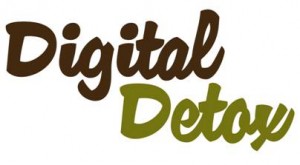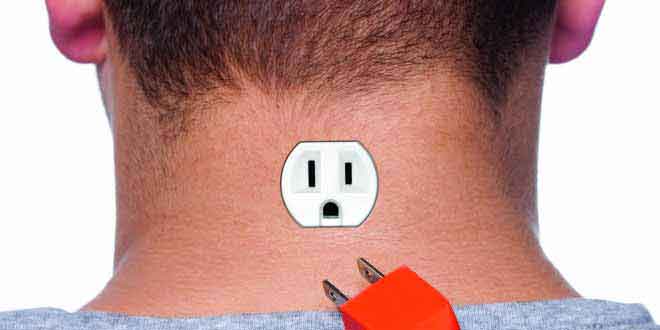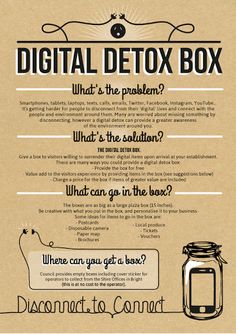Certified Organic Label Guide
Source: Organic.org
Making sense of organic labeling can be difficult, and many consumers do not understand the significance of the USDA Organic label. Since October 21, 2002, the following guidelines were established by the United States Department of Agriculture’s (USDA) National Organic Program (NOP) to assure consumers know the exact organic content of the food they buy.
Single-Ingredient Foods
On foods like fruits and vegetables, look for a small sticker version of the USDA Organic label or check the signage in your produce section for this seal.
The word “organic” and the seal may also appear on packages of meat, cartons of milk or eggs, cheese, and other single-ingredient foods.
Multi-Ingredient Foods
Foods such as beverages, snacks, and other processed foods use the following classification system to indicate their use of organic ingredients.
100% Organic—Foods bearing this label are made with 100% organic ingredients* and may display the USDA Organic seal.
Organic—These products contain at least 95–99% organic ingredients (by weight). The remaining ingredients are not available organically but have been approved by the NOP. These products may display the USDA Organic seal.
Made With Organic Ingredients—Food packaging that reads “Made With Organic Ingredients” must contain 70–94% organic ingredients. These products will not bear the USDA Organic seal; instead, they may list up to three ingredients on the front of the packaging.
Other—Products with less than 70% organic ingredients may only list organic ingredients on the information panel of the packaging. These products will not bear the USDA Organic seal.
Keep in mind that even if a producer is certified organic, the use of the USDA Organic label is voluntary. At the same time, not everyone goes through the rigorous process of becoming certified, especially smaller farming operations. When shopping at a farmers’ market, for example, don’t hesitate to ask the vendors how your food was grown.
*Salt and water are not included.
process
What Does Eating Healthy Mean? 16 Healthy Eating Principles You Must Know!
What does Eating Healthy Mean?
1- Mitochondrial Energy Production:
Mitochondria definition: and organelle found in large number in most cells, in which the biochemical process of energy production occurs. It has an inner and outer layer.
2-Organic sourced foods: look up EWG.org
The environmental working group is a nonprofit, nonpartisan organization dedicated to protecting human health and the environment. Learn what organic means
U.S. Environmental Protection Agency (EPA) is a great resource
3- Delayed food allergens: and allergy is an adverse reaction due to immunologic mechanism. A delayed onset food allergy is an auto immune disease that causes your immune system to overact when you ingest certain foods. The immune cells mistakenly attack food particles and treat them as foreign invaders and produce anti-bodies to try to fight what they perceive as toxins. Known allergies we can the immune and digestive systems, draining the body of energy.
Energetic Health Institute…an innovative 501(c)3 California Non-Profit & Gold Rated by GuideStar.org for transparency. School approved by the National Association of Nutrition Professionals (NANP)
I’m a Certified Holistic Nutritionist who can order you the right lab work to complete and over see this process.
https://www.
4- 60% Alkalizing pH scale 0-14 Acid vs. Alkaline
Certain foods can effect of the acidity and pH of bodily fluids, including the urine or blood, and therefore can be used to treat and prevent disease
5- Green Food
Chlorophyll turns into new blood. Green promotes health and energy.
6- ORAC Value of Food
Oxygen radical absorbance capacity Is the unit of measurements of antioxidants found in food. (calories are a unit of energy)
http://superfoodly.com/orac-
7-Refined Sugar
A healthy adult has approx 5 liters of blood circulating at any given moment and needs 1 teaspoon of sugar available during a fasting state. That’s all the body needs to function.
12-ounces of soda or energy drinks typically contain approx 10 tsp of sugar. That raises the blood sugar 10x above what the body needs to function and typically within a matter of minutes.
1 Teaspoon of Sugar = Approx 4 Grams of Sugar
Take the total grams of refined sugar & divide by 4 to learn how many teaspoons of sugar you are consuming per serving.
8-Naturally sweet:
Think Real food
9- Fiber: 8-12 grams per meal. Average 25-30 grams a day.
Adds bulk to you diet and aids in digestion.
Insoluble fiber: found in wheat, bran, vegetables, and whole grains. It helps speed passage of food through the stomach and intestines.
Soluble Fiber: attacks water and turns into gel, slowing digestion. Found in foods like oat bran, barley, nuts, seeds, beans, lentils, peas, and some other veggies and fruits. Can help lower cholesterol.
10-Raw foods
Raw foods contain enzymes. Enzymes help break down food and aid in digestion.
Proteases: breaks down Protein
Lipase: breaks down fat
Amylase: breaks downs carbs
11- Healthy Preparation Methods
12-Environmentally Safe Meats and Fish
13-Environmentally safe Cookware
NO TEFLON!
14-Friends and Family MOODS
15- Beverage 8oz or less
16- Burn off what you consume!
Exercise/movement
How to Reduce Inflammation: 4 Ingredients Could Be the Key
4 Key Ingredients For Improving Inflammation
Inflammation is the body’s way of defending itself against disease and is a self-protective mechanism that can support the natural healing process. However, when the inflammation is chronic because of intrinsic and extrinsic factors, then this can leads to conditions where disease manifests. The good news is that there are various natural anti-inflammatories that can ease many of the chronic inflammatory conditions.
Below are a list of the key ingredients that can improve inflammation…
- Curcumin. This is the active compound found in the Indian spice turmeric. Its curcuminoids can

reduce pain and inflammation by inhibiting NF-kB, a protein complex that controls transcription of DNA, cytokine
production and cell survival. It is involved in the cellular responses to stimuli such as stress, cytokines, and plays an integral role in regulating the immune system response. - Serrapeptase. This is a proteolytic enzyme that can dissolve and safely digest inflammation within the body. Once the inflammation is removed, it’s possible for the body’s natural self-healing mechanisms to come into play. Serrapeptase is derived from the silkworm intestine but is now manufactured within a laboratory. When serrapeptase is taken it can safely eliminate inflammation that can appear as various symptoms including redness, swelling, pain and more.
- Ecklonia Cava Extract is a super nutrient that can help to support healthy blood flow and circulation. Studies show it may reduce blood glucose levels, while supporting blood pressure and cholesterol levels.
- MSM (Methylsulfonylmethane) and other trace minerals can help to support healthy lungs, joints,
tendons and connective tissues. This is an organosulfur compound that occurs naturally in plants and can help with a variety of health problems related to and including stress, inflammation, allergies and gastrointestinal conditions.
Any of the above nutrients can help to provide inflammation relief. Curcumin and Serrapeptase are particularly powerful as they are highly researched and have been documented as helping thousands of people improve their health conditions, due to their anti-inflammatory properties. When they are taken on a daily basis, they can provide long term results. Alongside taking these nutrients it’s recommended to follow an anti-inflammatory diet, as it’s then possible to find significant relief from the painful symptoms of inflammation.
Digital Detox- A detox without Food!
Turn it OFF
The digital detox is nothing more than taking a break from your devices. While on vacation, we are constantly connected over social media, email, and by using our devices to find the best restaurant on Yelp or the best route on maps. “Some of the changes I’ve noticed in clients after they’ve taken a digital detox are that they are more balanced and calmer in their lives due to periodically stopping the continual digital exposure throughout their day.”Try to have at least one hour before bedtime where there is no digital stimulation so you can unwind. Don’t let digital devices stay on at night next to you unless it’s mandatory.
And although others take a more hardcore approach with week-long ‘summer camps’ or designated holidays, pledging to take just one day offline while you travel means you can reap the benefits of a detox, without sacrificing the joy of staying connected to your family and friends or taking the perfect Instagram or Snapchat shot.
Some suggest that the discipline in these smaller detoxes can be hugely beneficial to your mental state, and you can implement them on a smaller scale in your everyday routine.
This video points out the daily grind, and why we could all use a break.
This concept can be difficult at first, the benefits are real. Many detoxers find a real world connectedness that enriches and enhances our lives in a way no Wi-Fi connection can.
These short-term benefits are just part of the story. Mentally, even a short break from electronics can have long-term benefits that can make you happier and more successful in every aspect of your life.
Today, in a world where the average user logs almost 2 hours per day on social media alone, this idea is somewhat terrifying. Dr. Yvonne Thomas, a psychologist and therapist based in Los Angeles, puts it simply: “You can be so preoccupied with your digital devices that it’s all too easy to inadvertently sacrifice time, relationships, sleep, focus, productivity and balance in your life. Many people are not even aware of the toll their extensive usage of digital devices costs them until they have suffered a loss or upset because of this.”.
Could this cure-all of the tech world provide more benefits to the humans using the tech than the devices themselves? Digital detox devotees think so, and they’ve started a movement that seems to grow louder and larger with every tech announcement or app update.
Not convinced? Try it for one week.
How to detox without losing your job or social life.
There’s no one-size-fits-all approach to detoxing. Randi Zuckerberg, founder and CEO of Zuckerberg Media, believes in a ‘digital sabbath’, while Google chairman Eric Schmidt believes in scheduled ‘on’ and ‘off’ times, and commits to gadget-free meals.
When traveling and taking a vacation, every notification you receive– emails, instant messages, text messages, social media notifications– takes a moment to acknowledge, another to process and another (or a few depending on how soon that deadline really is) to forget. Suddenly the notification, even if you neglected to react or respond to it, is a significant distraction from what should be a chance to explore another culture and enjoy some time away from the screen. Multiply this by the 50+ notifications many of us will receive in a day, and you can start to get a sense of what you’re losing to your device.
Dr. Thomas has seen first-hand how deep the benefits can be. “Some of the changes I’ve noticed in clients after they’ve taken a digital detox are that they are more balanced and calmer in their lives due to periodically stopping the continual digital exposure throughout their day.
“Try to have at least one hour before bedtime where there is no digital stimulation so you can unwind. During this digital-free time period, try to connect with yourself through meditation, reflection or awareness. Don’t let digital devices stay on at night next to you unless it’s mandatory.



